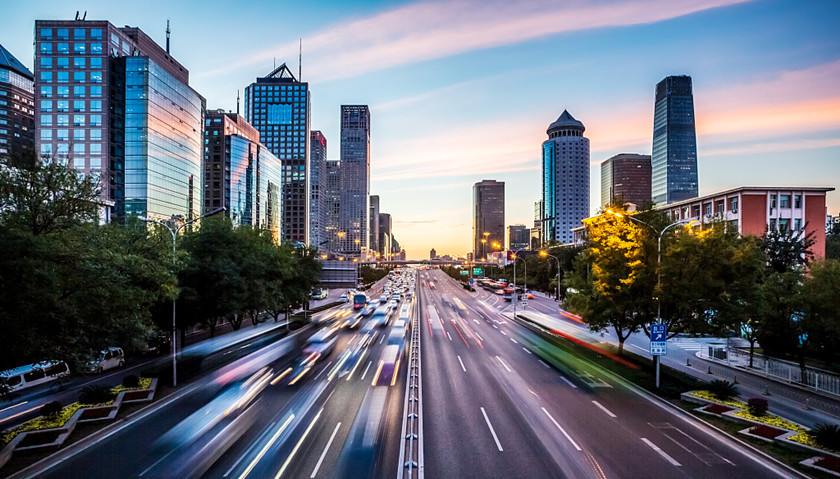Internet of things
The concept of the Internet of Things was first proposed by the Auto-ID Center of the Massachusetts Institute of Technology in 1999. What is the Internet of Things? All things are connected, allowing objects that cannot communicate or speak to be connected and have the ability to communicate (data transmission) is the Internet of Things.If you want to learn more about the development and related knowledge of the Internet of Things, you can read “Understanding the Internet of Things, the Origin and Development of the Internet of Things”
Aplicações da Internet das coisas
The applications of the Internet of Things are very common both at home and abroad. It can be said that it can be seen everywhere in our lives. Below we will list some domestic application cases: “Applications of the Internet of Things”!
Smart City
1) Shared massage chairs, this application should be very familiar to everyone. Each shared massage chair has a 4G module, which is mainly used for payment data interaction.
2) Smart manhole covers. In the past, manhole covers would be stolen. Later, relevant departments would install a vibration sensor and an NB-IOT module/terminal under the manhole cover to monitor the status of the manhole cover in real time. If the vibration amplitude is too large, an alarm will be issued and the The information is sent to the regulatory platform.
3) Shared charging piles, similar to shared massage chairs, each charging pile will be equipped with a 4G module to complete the interaction of payment data.
4) Smart express cabinet. A 4G wireless industrial router will be placed in the express cabinet. After the user scans the code, the wireless router will send the data to the management platform for information verification. If it matches, it will issue an instruction to open the express delivery.

Água inteligente
1) Flash flood monitoring. In some areas of China, heavy rains in summer will loosen the soil, causing landslides, mudslides, floods, etc. Seriously endangering the life safety of local people, for this reason, a vibration sensor GPRS data transmission terminal is used to create a flash flood monitoring system. When the vibration value is too large, an alarm will be issued and the data will be sent to the supervision platform. Relevant management personnel will notify local people to evacuate as soon as possible.
2) Dam flood release warning. In the past, people downstream would not know about upstream flood releases because of fishing or other reasons. Failure to retreat in time resulted in death. To this end, this plan sets up a water level sensor upstream. When the water level reaches a certain amount, an alarm will be generated and the alarm will be broadcast to broadcasts along the river.
Logística inteligente
1) Smart logistics is a general term for the application of new technologies in the logistics industry. It refers to the realization of system awareness in all aspects of logistics, such as transportation, warehousing, packaging, loading and unloading, and distribution, supported by information technologies such as the Internet of Things, big data, and artificial intelligence. , comprehensive analysis and processing functions. The realization of smart logistics can greatly reduce transportation costs in various industries, improve transportation efficiency, and enhance the intelligence and automation level of the entire logistics industry. The Internet of Things is used in the logistics industry, mainly in three aspects, namely warehousing management, transportation monitoring and smart express cabinets.
2) Warehouse storage: Usually an Internet of Things warehouse management information system based on LoRa, NB-IoT and other transmission networks is used to complete the receipt and warehousing, inventory allocation, picking out of the warehouse, and data query, backup, statistics, and report production of the entire system. and report management tasks.
4) Transportation monitoring: Real-time monitoring of vehicle driving conditions and cargo transportation conditions during cargo transportation, including cargo location, status environment, and driving behaviors such as vehicle fuel consumption, fuel volume, vehicle speed, and number of brakes.
5) Intelligent express cabinet: It combines technologies such as cloud computing and the Internet of Things to realize express delivery access and back-end center data processing, and collects and monitors data such as the delivery and receipt of goods in real time through RFID or cameras.
Smart energy
The Internet of Things is used in the energy field and can be used for remote control of water, electricity, gas and other meters as well as street lights. Smart energy is a part of smart cities. Currently, IoT technology is applied in the energy field, mainly for water, electricity, gas and other meters, as well as remote control of street lights based on external weather, etc., and object sensing based on the environment and equipment. Through monitoring, we can improve utilization efficiency and reduce energy loss. According to the actual situation, smart energy is divided into four major application scenarios:
1) Smart water meter: It can use advanced NB-IoT technology to remotely collect water consumption and provide services such as water reminders.
2) Smart meter: A new type of automated and information-based electricity meter with functions such as remote monitoring of electricity usage and timely feedback.
3) Smart gas meter: Through network technology, the gas consumption is transmitted to the gas group without the need to go to the home to read the meter, and it can display data such as gas consumption and gas consumption time.
4) Smart street lights: By carrying sensors and other equipment, they can realize functions such as remote lighting control and automatic fault alarm.